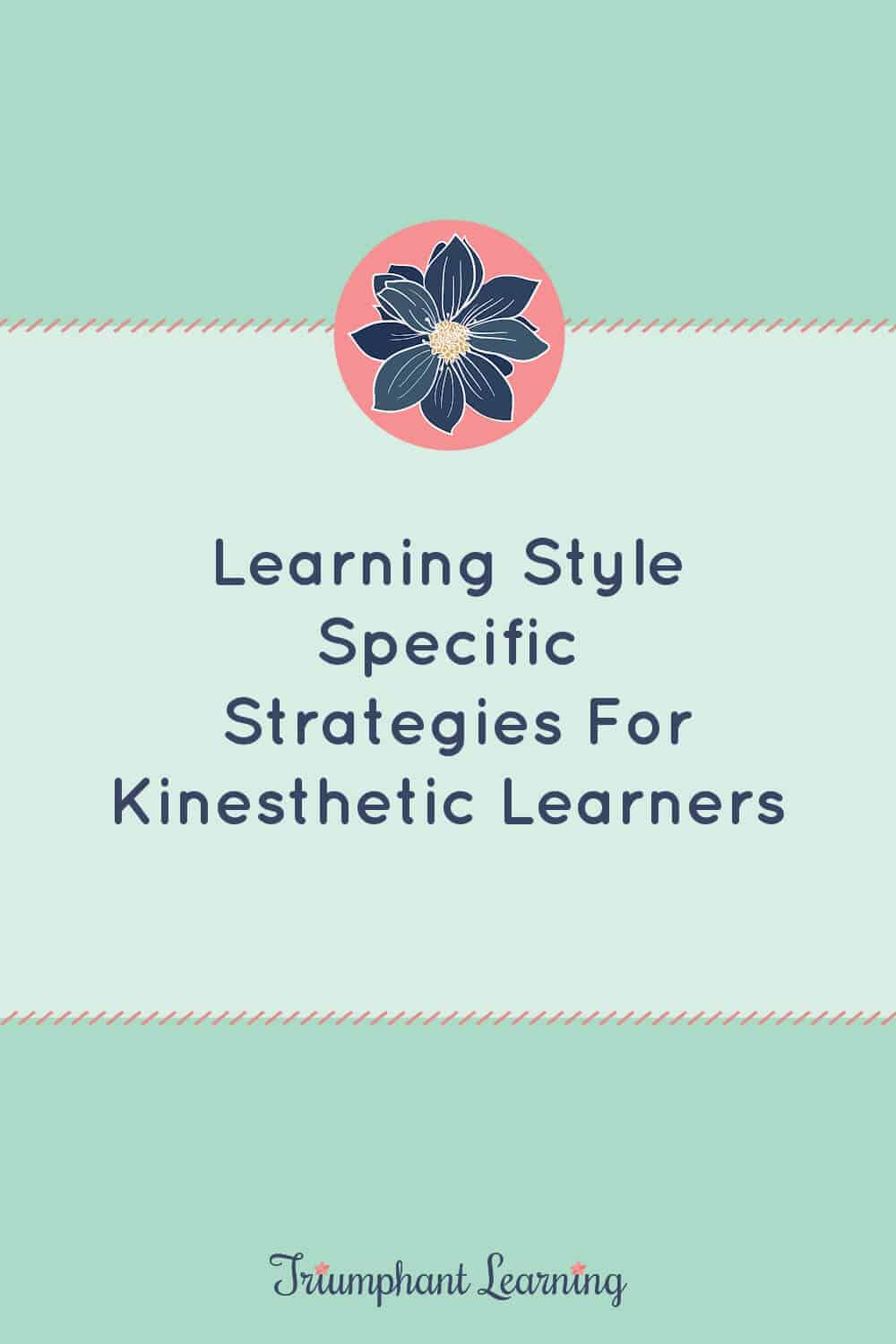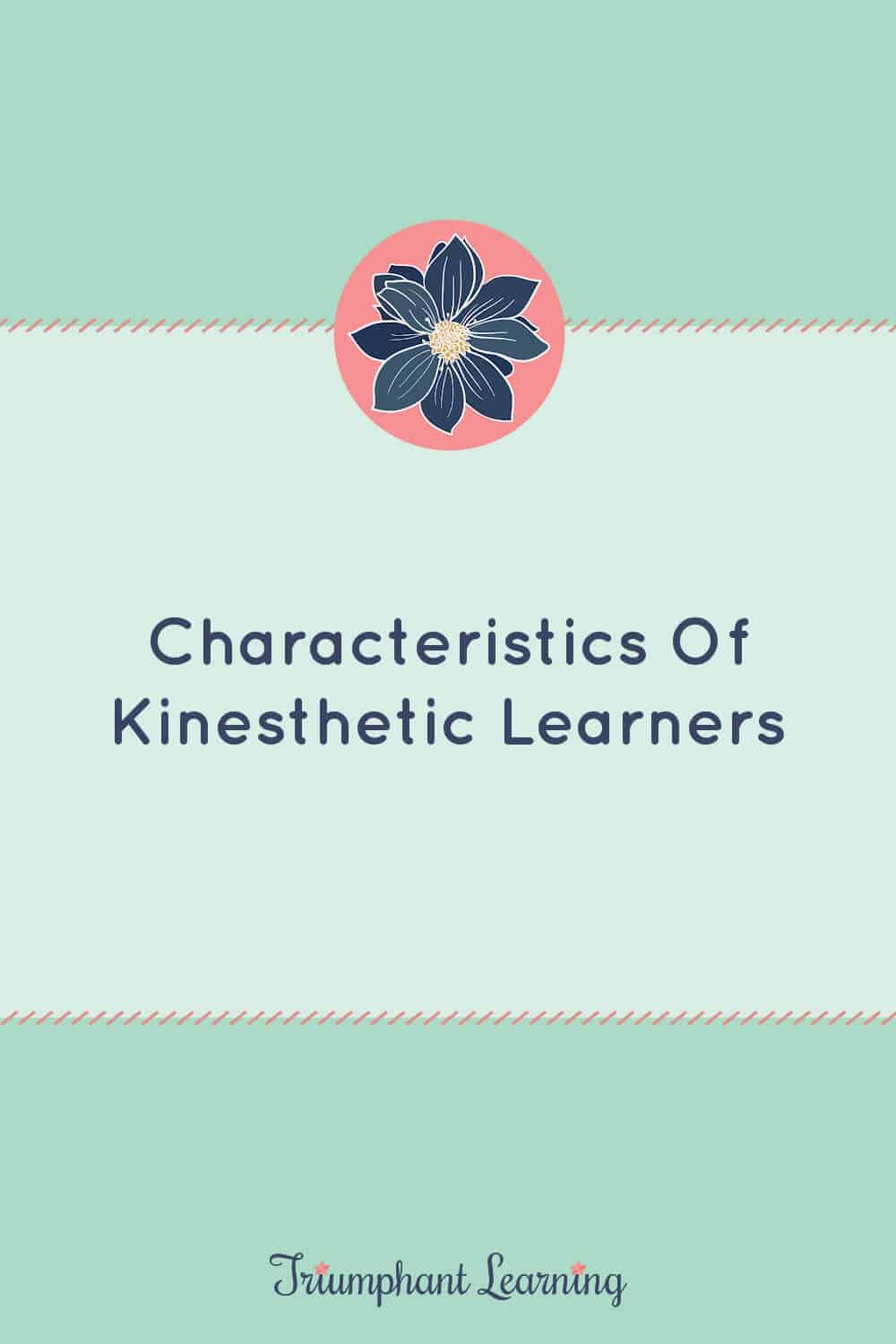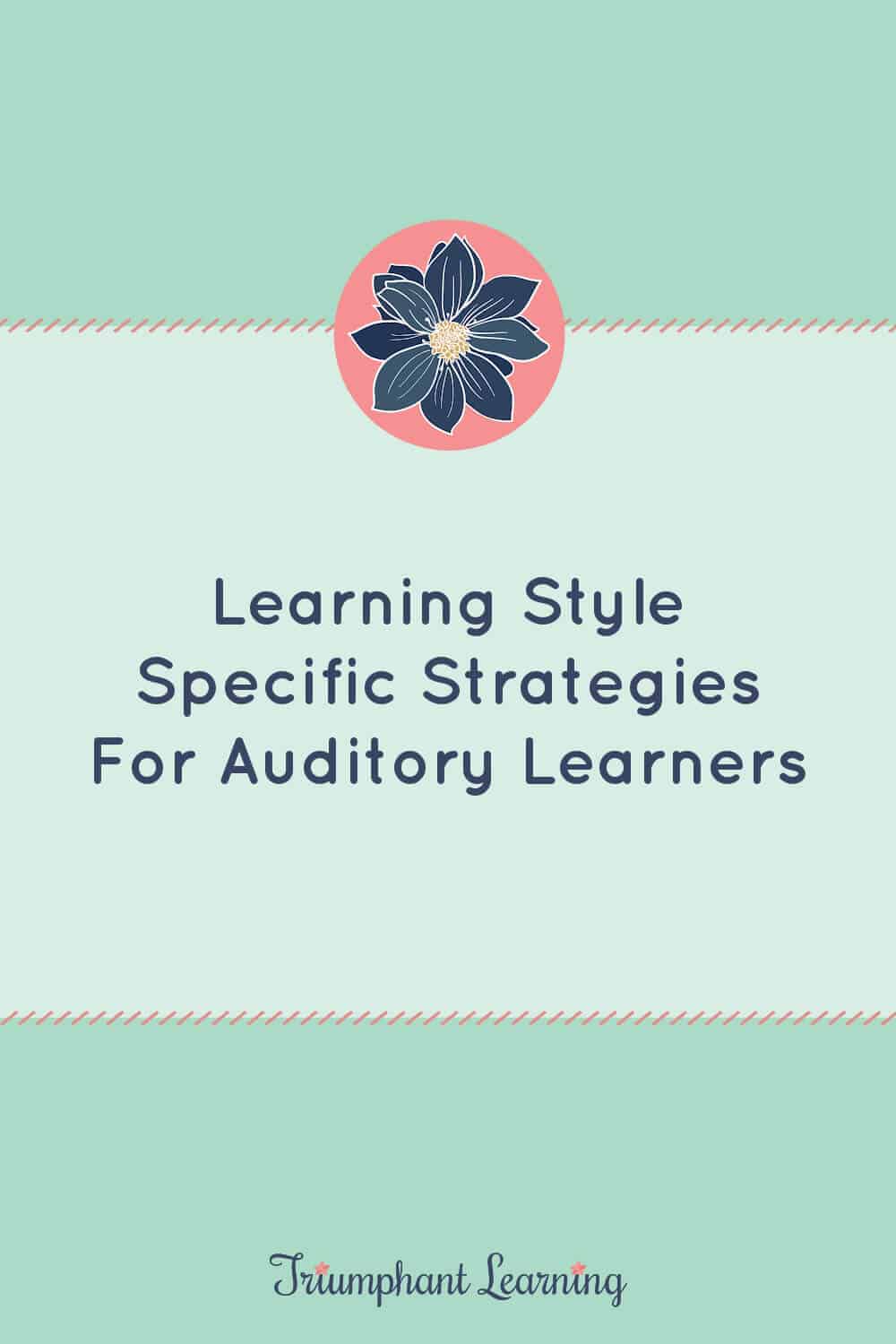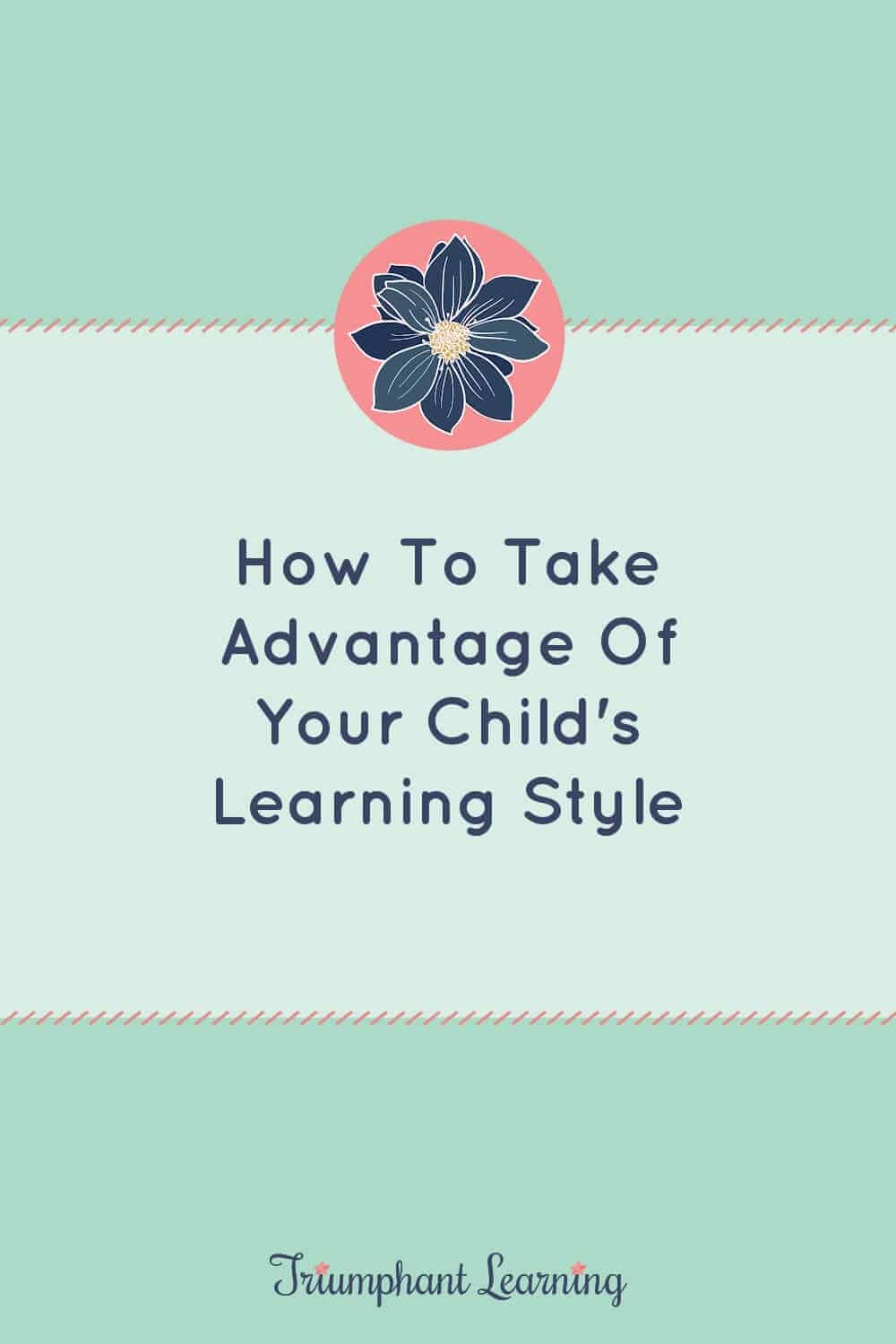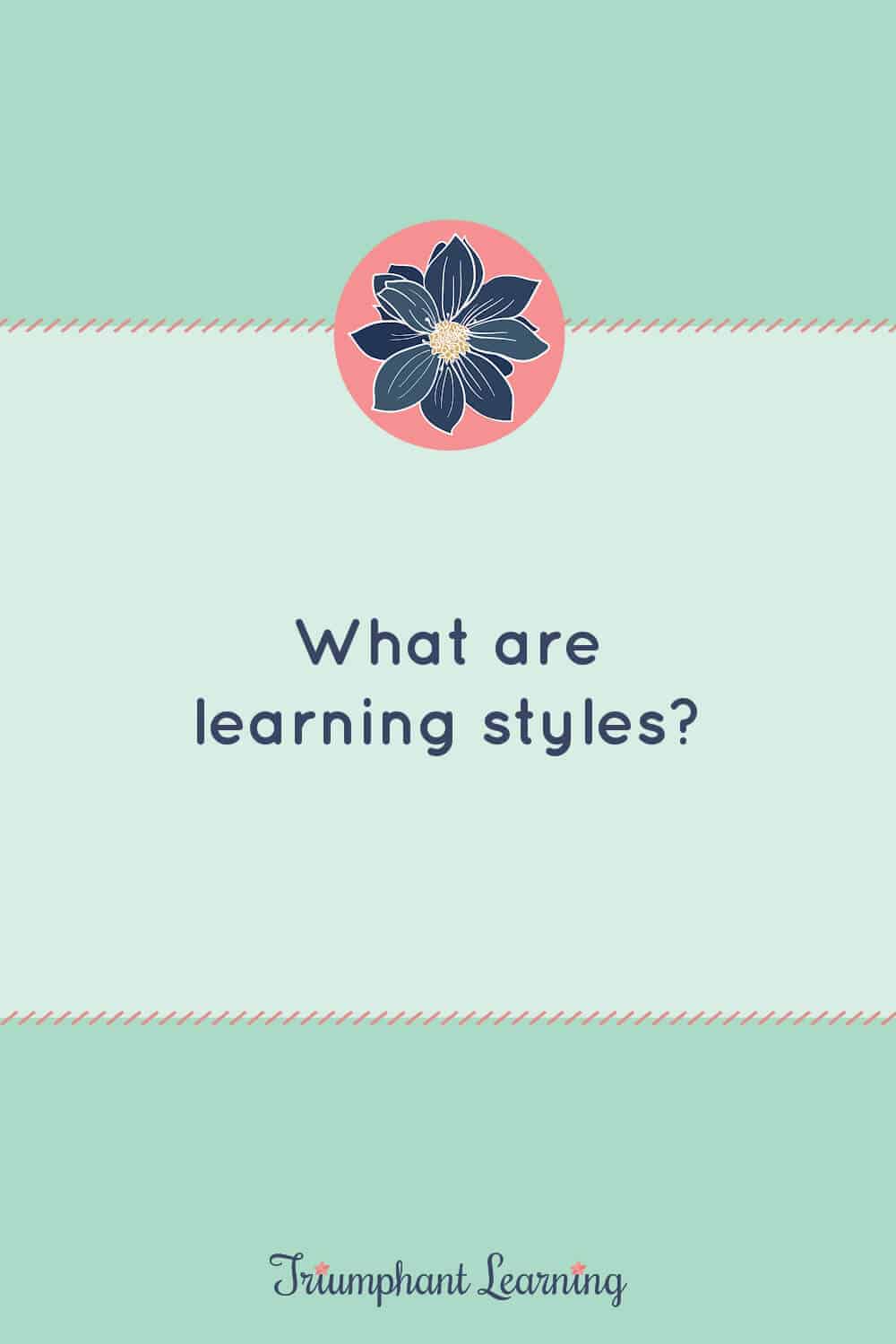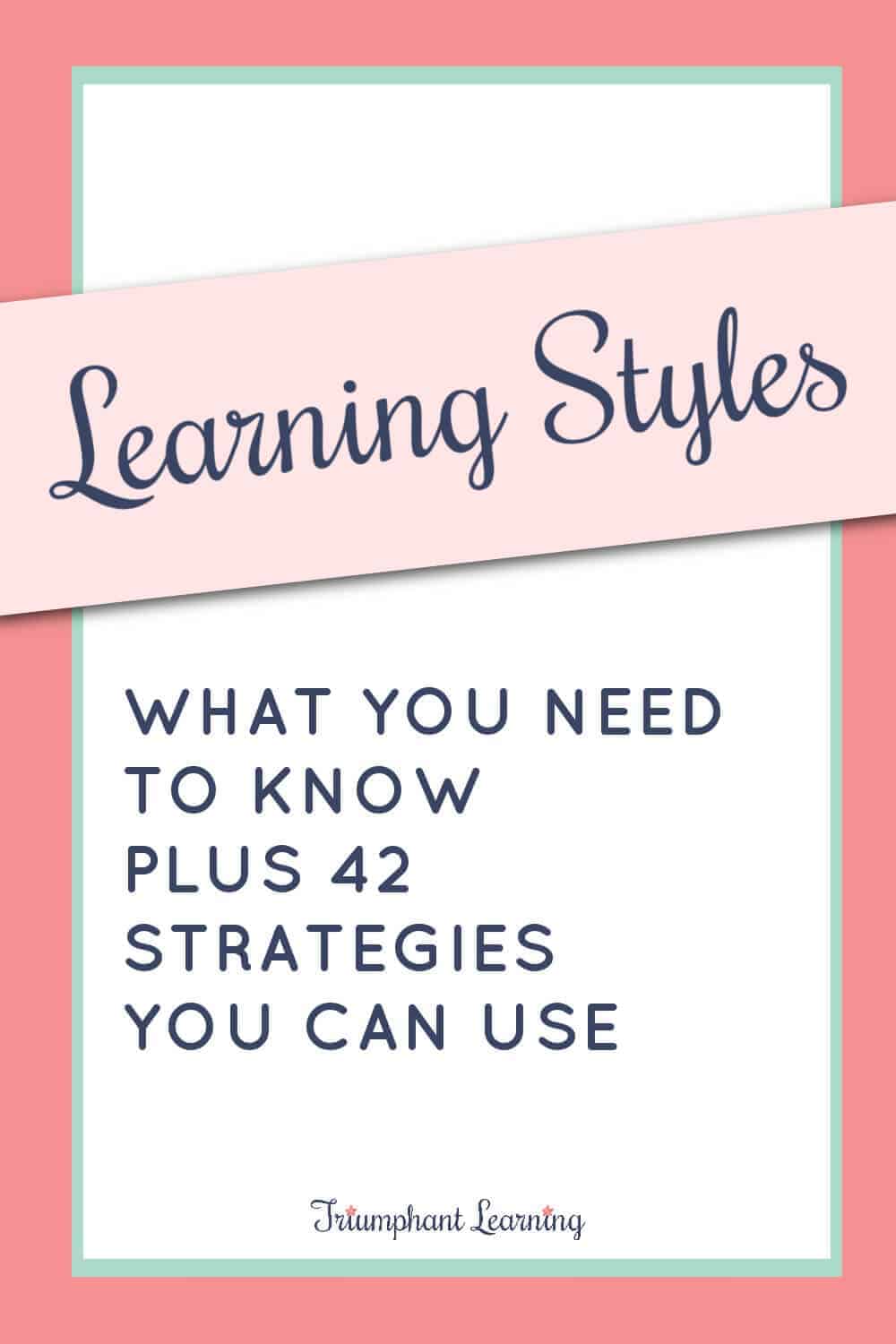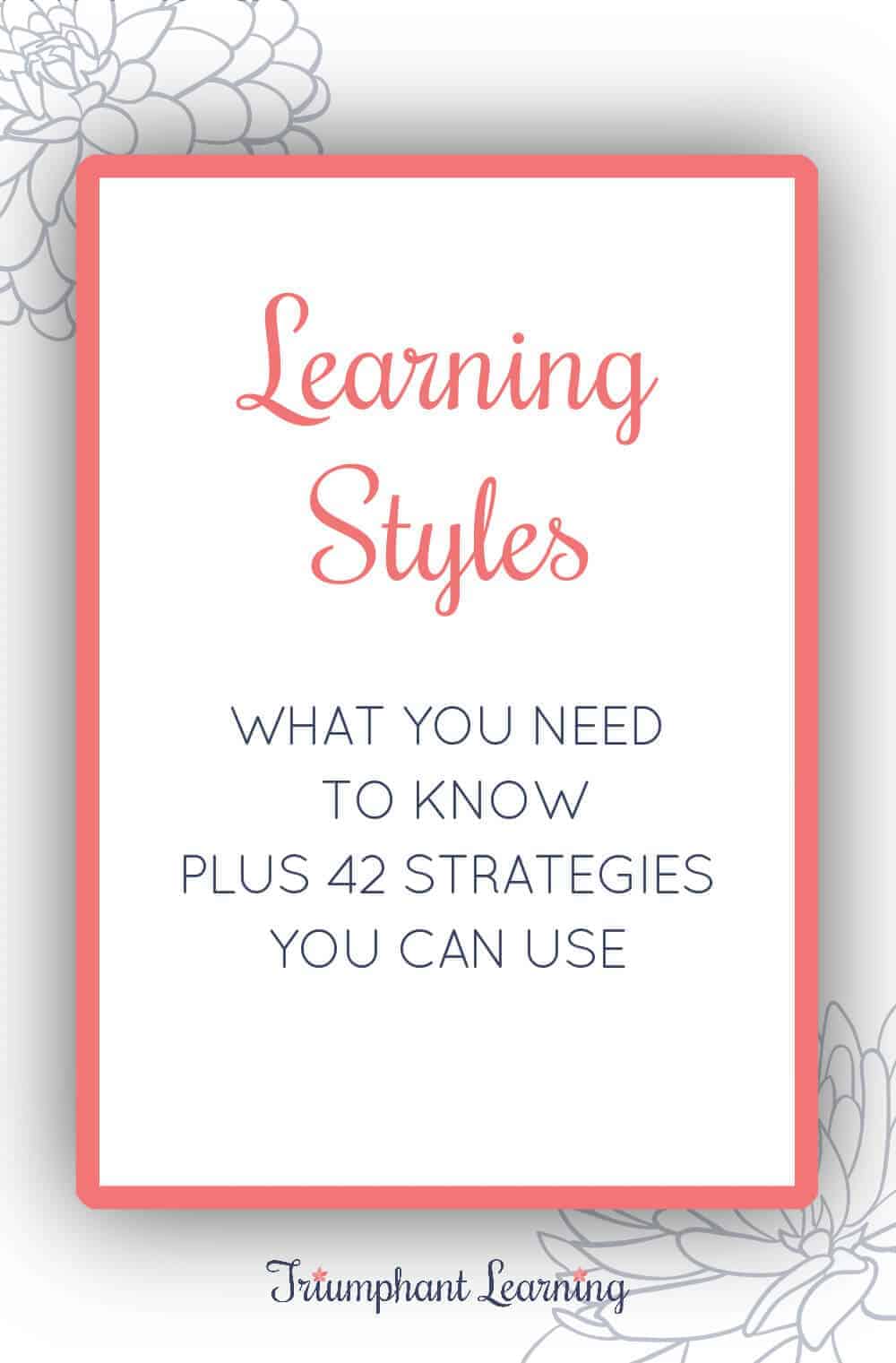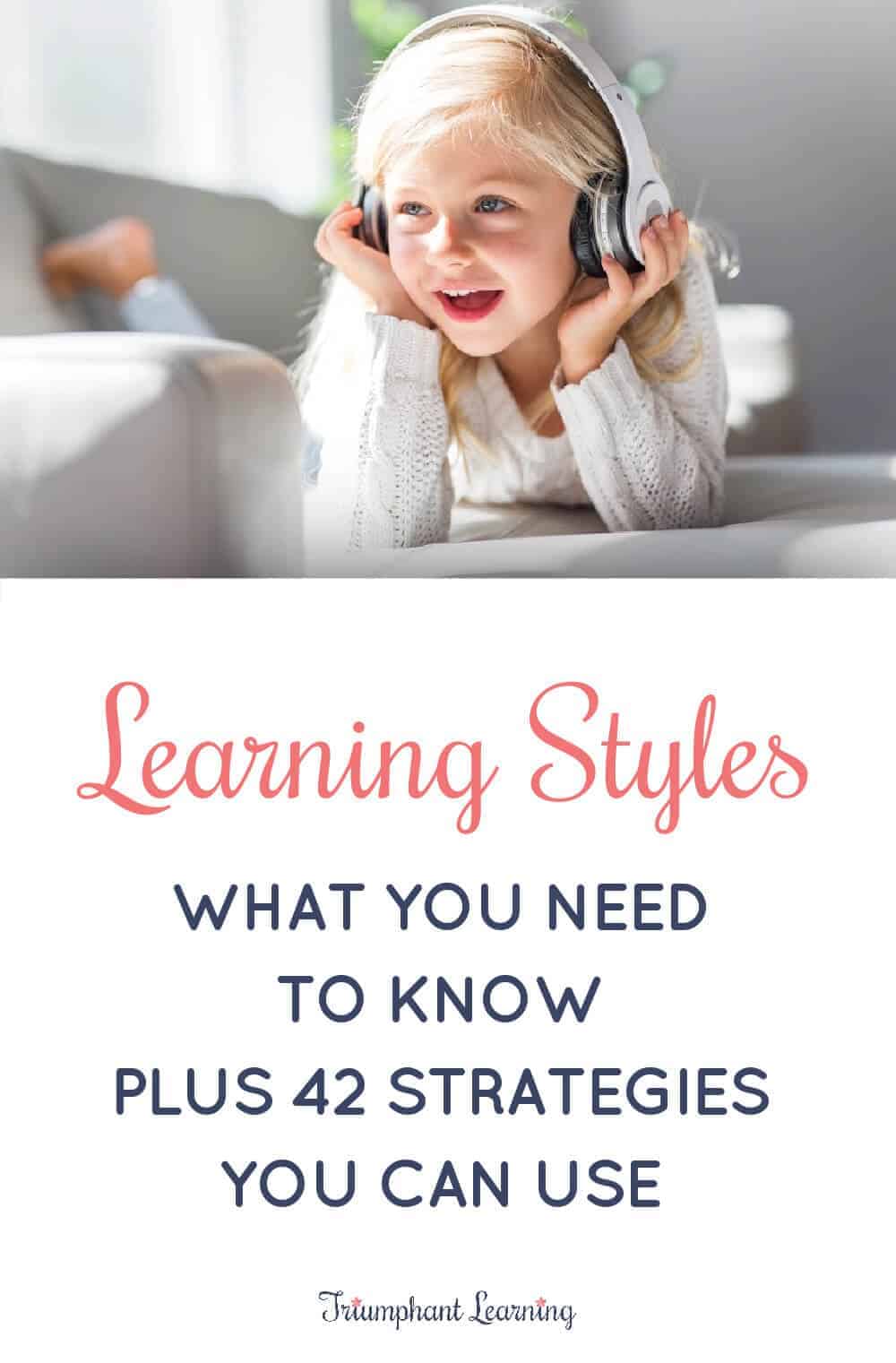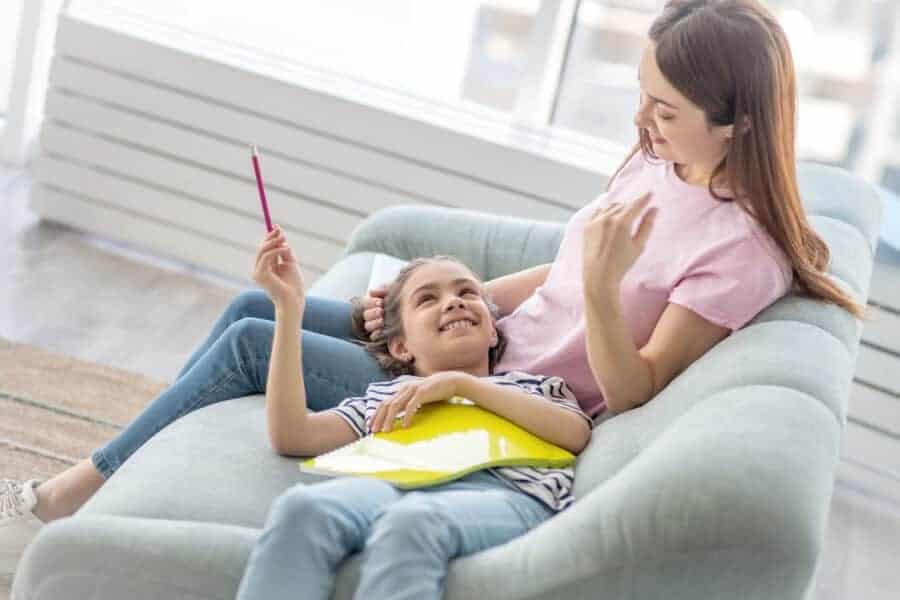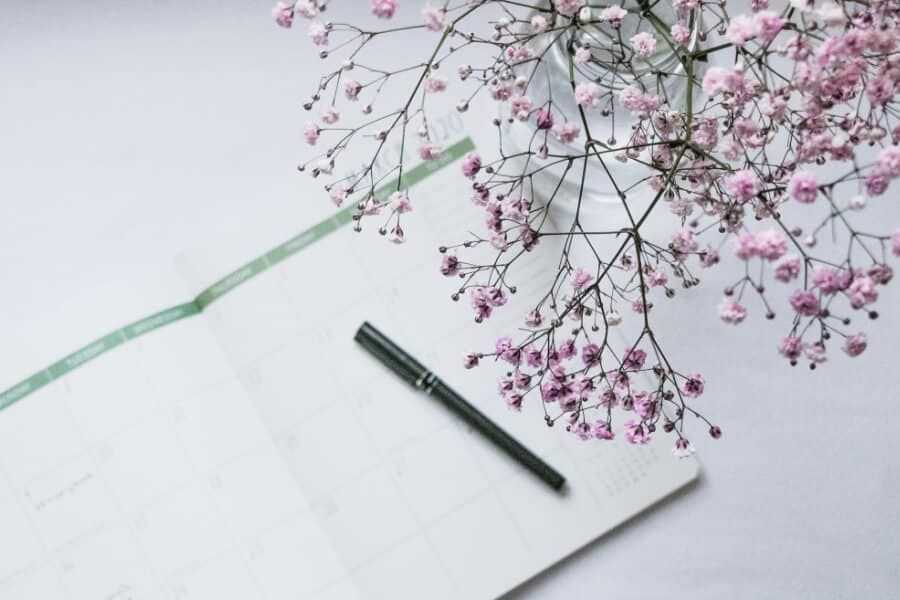Learning Styles: What You Need To Know Plus 42 Strategies You Can Use
Preview: Does your child’s learning style matter? Learn what you need to know about learning styles and strategies to use in your homeschool.
If you were a fly on the wall of our homeschool, you might have seen the following on any given homeschool day:
- Bouncing on an exercise ball while narrating.
- Acting out a Shakespeare play with dolls.
- Drawing a map of a traveler’s journey.
- Recording narrations into a phone’s voice memo app.
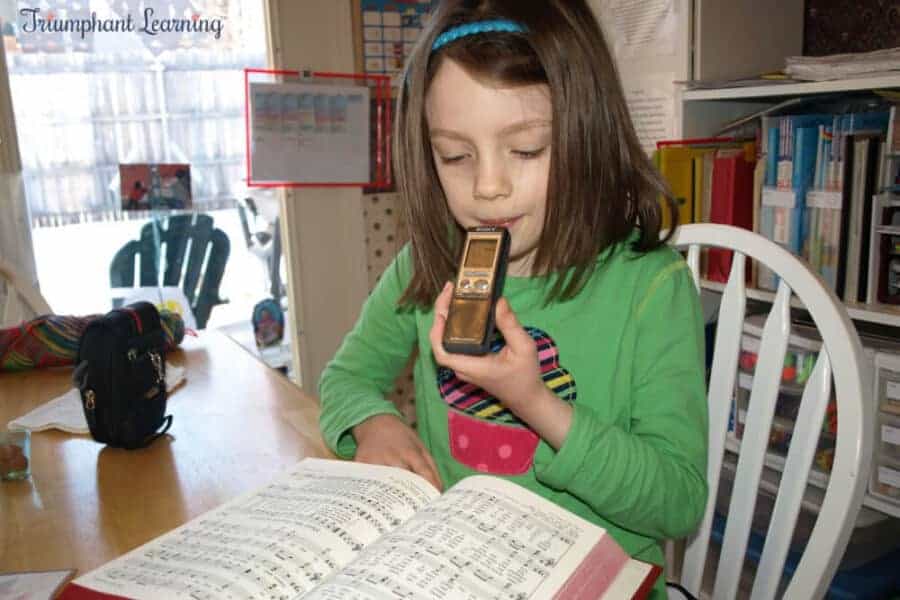
My children are very different learners. One is a visual and kinesthetic learner and an auditory processor. The other is a visual learner and processor. They have different preferred learning styles.
You may have heard the advice to teach to your child’s preferred learning style, but how do you do that when your children have different preferences? And should you even do that?

In this article, you will learn what learning styles, or learning modalities are, how to determine your child’s primary learning style, and strategies you can use to improve his homeschool experience. Plus, you will learn the mistake you should avoid when implementing learning style strategies.
Quick Navigation
- What are learning styles?
- How To Take Advantage Of Your Child’s Learning Style
- Special Considerations Regarding Learning Styles
- Characteristics Of Visual Learners
- Characteristics Of Auditory Learners
- Characteristics Of Kinesthetic Learners
- Learning Style Specific Strategies For Visual Learners
- Learning Style Specific Strategies For Auditory Learners
- Learning Style Specific Strategies For Kinesthetic Learners
Prefer to listen? Episode 66 of the All in a Homeschool Day Podcast addresses learning styles. In addition to learning about learning styles, you’ll hear examples of how I use learning style strategies in my homeschool to enhance my children’s educational experience.
What are learning styles?
A baby or toddler provides the best way to understand what learning styles are. Think back to when your child was a baby. Throughout the day, she picked objects up and put them in her mouth. She heard a bird chirping and turned her head to find the source of the sound. She was captivated when the sunlight shone through the blinds and danced on the floor as it penetrated through the trees swaying in the wind.

Your child was using her senses to learn about the world around her. Learning styles, or learning modalities, are how we use our senses to learn new skills and information.
There are three primary learning styles.
- Visual
- Auditory
- Kinesthetic
Some definitions break the kinesthetic learning modality into two categories: kinesthetic (movement) and tactile (touch).
How To Take Advantage Of Your Child’s Learning Style
Find Ways To Incorporate Your Child’s Preferred Learning Modality
You’ve probably heard the advice to present lessons in your child’s preferred learning style. I’ll address in a moment why this is not the best advice, but it is true that when you find ways to present new material using your child’s preferred style, it is easier for them to learn. In the sections below, you’ll find strategies you can use to help your child learn using his preferred learning style.
Incorporate All Learning Modalities Into Your Homeschool Lessons
Don’t let this point overwhelm you! I am not suggesting that you spend hours planning how you can provide a balanced mix of activities using the different learning modalities.
Instead, mix it up and use a variety of strategies that incorporate the three learning styles. This provides many benefits for your child, including:
- Using a variety of strategies keeps your child’s learning interesting and fun.
- Some strategies are more effective for some subjects than others.
- Your child will not always be able to learn in his preferred style (think co-op classes, college classes, or a work setting). He needs to improve his weak areas so he can learn using any style when necessary.
- As your child matures and develops new skills, he may discover that his preferences change or special circumstances necessitate using a different modality.
This does not need to be complicated. As you plan lessons for the year or the week, ask yourself a couple of questions.
- How can I help my child understand this lesson better?
- Do I need to incorporate manipulatives or hands-on learning?
- Should I read this book out loud or find an audiobook?
- Could we draw a diagram or visual image to solidify this concept?
These are just a few of the questions you could ask yourself. As you learn how your child learns best, you will learn which strategies are the most helpful and that you gravitate toward using the most. Those will be your “go-to” strategies.
You can then find ways to incorporate strategies from the other learning modalities to improve your child’s skills in those areas. You might incorporate them for specific projects or types of lessons. Or, you might try to incorporate them once a week.

Most importantly, don’t stress out about making sure you use all of the learning modalities. I found that just being aware of the need to incorporate variety was enough to help me think outside the box and spice lessons up.
Help Your Child Learn To Take Advantage Of His Preferred Learning Style
When your children are young, it is your responsibility as the homeschool teacher to provide lessons that meet their needs. As they mature, they need to learn how to do this for themselves.
Begin this process by incorporating different strategies into their lessons and discerning how they learn best and how you can encourage them to improve their skills in weaker areas. Then talk about this.
One of my daughters learns best visually and needs to move as she processes information. When she is stuck, I often suggest that she bounces lightly on an exercise ball or walks around the yard. She naturally gravitates to physical or digital books, so I encourage her to listen to audiobooks to build her skill of learning new material through listening to spoken words. She now recognizes these needs without my prompting.
Over time, she began recognizing when she needed to move more while studying. She tried different styles of note-taking until she found what works best for her. She is learning how to apply the different strategies we have used over the years as she assumes more responsibility for her learning in the high school years.
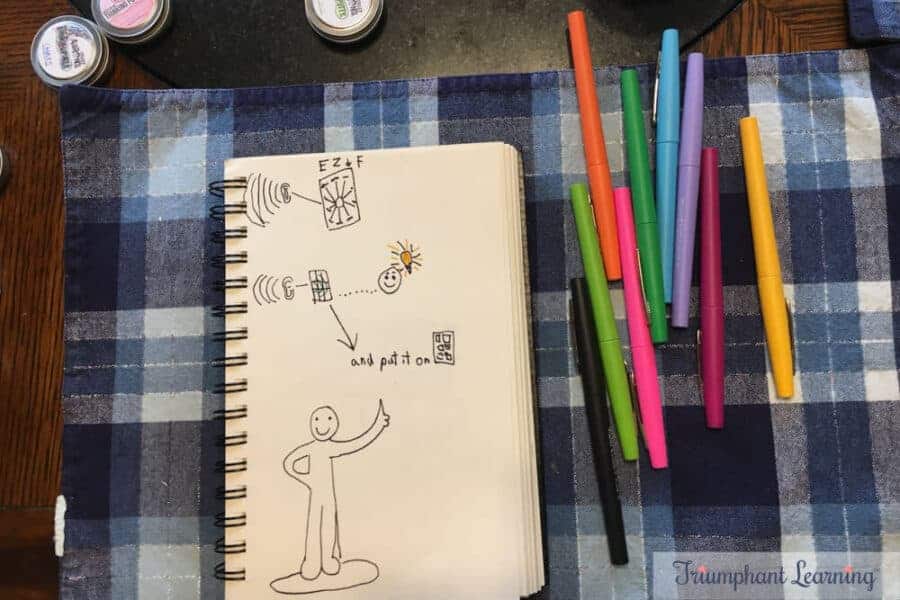
Special Considerations Regarding Learning Styles
Does your child have different input and processing preferences?
Some people prefer to learn new material using one learning modality and process it using a different one. For example, I prefer to learn new material by reading or visually seeing an example, but I prefer to process what I learned by orally narrating to myself or others.
Different input and processing modalities can make it more difficult to discern your child’s preferences. If you have a child who talks constantly, you might assume he is an auditory learner when he might only be processing what he learned through his conversations.
Again, this does not mean you need to tailor his education to only use those input and processing modalities, but it can help explain why you might think there is a disconnect or confusion about how your child learns best.
Learning Difficulties Complicate Determining Preferred Learning Styles
One of my daughters was a struggling reader until age 11. Until she was a proficient reader, I read all of her lessons to her or she listened to an audiobook. I thought she was an auditory learner, but as she gained confidence and read her lessons independently, she preferred reading books instead of listening to them. (She still enjoys listening to audiobooks, but she prefers to read a school book instead of finding the audio version.)
If you have a struggling learner, it may take longer to determine his learning modality preference. Continue to employ strategies from all three categories. Building his skill in all three areas will help him adapt to different situations later in his educational and vocational career.
Your Preferred Learning Style May Not Be Your Child’s Preferred Learning Style
I much prefer to read the material I need to learn. One daughter prefers to listen to audiobooks. My other daughter needs to move, a lot.
We all have different preferences and needs. If I only taught lessons using strategies for visual learners, I would do a disservice to my daughters.
Because most people gravitate to using what they prefer and what is familiar, you should be a student of your child. Observe them to see how they learn best. Determine their strengths and weaknesses. Then help them take advantage of their strengths and shore up their weaknesses.
Characteristics Of Visual Learners
Visual learners prefer learning through visual elements such as text, charts, graphs, and images. They process information by writing notes, drawing images, creating graphics, or drawing charts or graphs.
- When younger, preferred to arrange toys so they “looked” right.
- When asked about their day, describes what they saw.
- Indicates emotion through facial expressions.
- Have vivid imaginations.
- Prefers reading books.
- Reads directions or looks at pictures/diagrams to put something together.
- Prefers to take notes or make drawings to process what he learned.
- Prefers to see the image when putting together a puzzle.
- Is easily distracted by sights.
- Sees a word as a whole when spelling.
- Remembers faces when meeting people.
- Remembers what they saw.

Characteristics Of Auditory Learners
Auditory learners prefer learning through spoken words such as lectures, discussions, and audiobooks. They process information by talking through ideas and concepts.
- When younger, talked out loud to toys as if they were real friends.
- When asked about their day, describes what they heard.
- Indicates emotion through the tone, pitch, and volume of their voices.
- Prefers listening to books or being read to.
- Plays music or hums when alone.
- Enjoys discussions about what he is learning.
- Talks through the process when putting together a puzzle.
- Gives long descriptions of experiences or for narrations.
- Is easily distracted by sounds.
- Sounds out words when spelling.
- Reads with whispering lip movements.
- Remembers names when meeting people.
- Remembers what they heard.
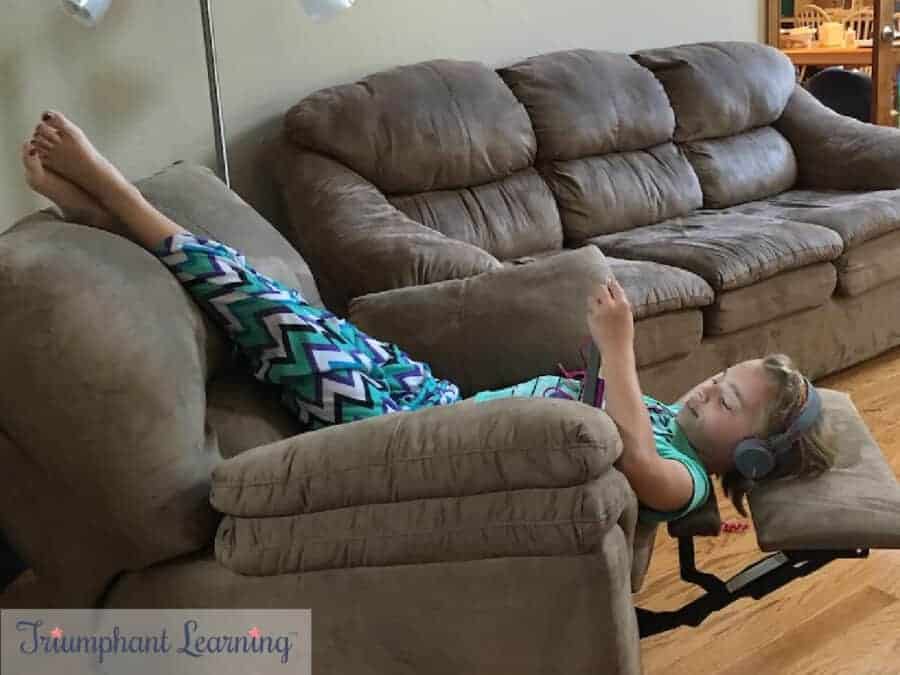
Characteristics Of Kinesthetic Learners
Kinesthetic learners prefer learning through tactile processes and movement. They process information by recreating, practicing, and demonstrating.
- When younger, was in constant motion.
- When asked about their day, describes what they did.
- Indicates emotion by their body tension.
- Needs to engaging hands or body while listening to a book to concentrate.
- Has a strong body awareness.
- Prefers to build or recreate what he learned.
- Is easily distracted by movement.
- Gestures with hands and moves body when talking.
- Writes words out to see if it “feels” right.
- Prefers comfortable clothing.
- Remembers what they were doing when they met a person.
- Remembers what they did.
- Likes to try new things.
- Always touching objects.
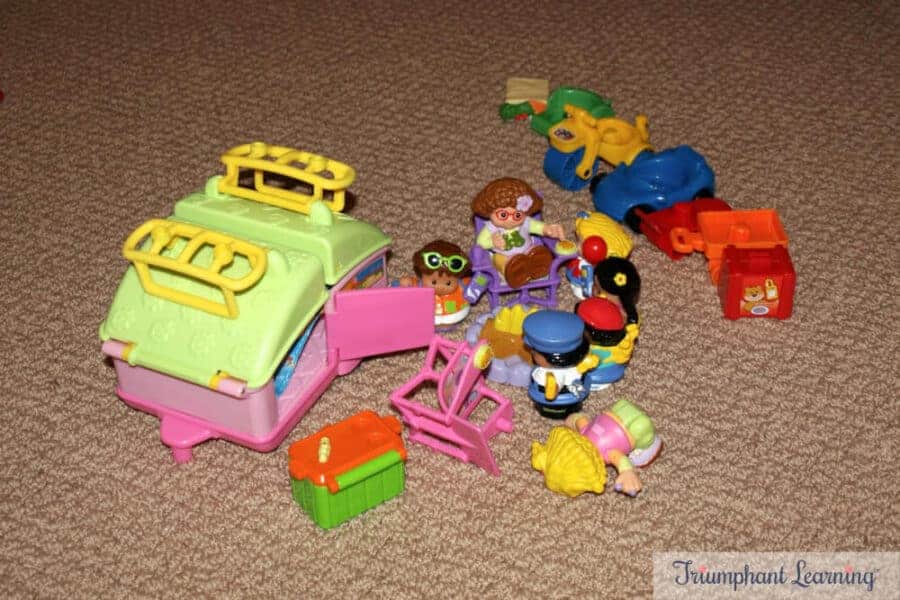
Learning Style Specific Strategies For Visual Learners
- Find books with graphs, charts, and illustrations.
- Ask for written narrations (text or drawings).
- Minimize visual clutter.
- Study by drawing diagrams or writing out answers to study questions.
- Practice spelling by looking for patterns in words and visualizing the word with your eyes closed.
- Visualize writing answers on a mental chalkboard.
- May enjoy mind mapping and sketch noting for brainstorming and note taking.
- Write out a list of tasks to complete.
- Use color when taking notes or highlighting text.
- Use flash cards.
- Watch speaker’s mouth to help stay focused.
- Make bulleted lists when studying.
- Draw Venn diagrams, charts, and graphs.
- Use plastic letters and manipulatives when understanding and remembering concepts.
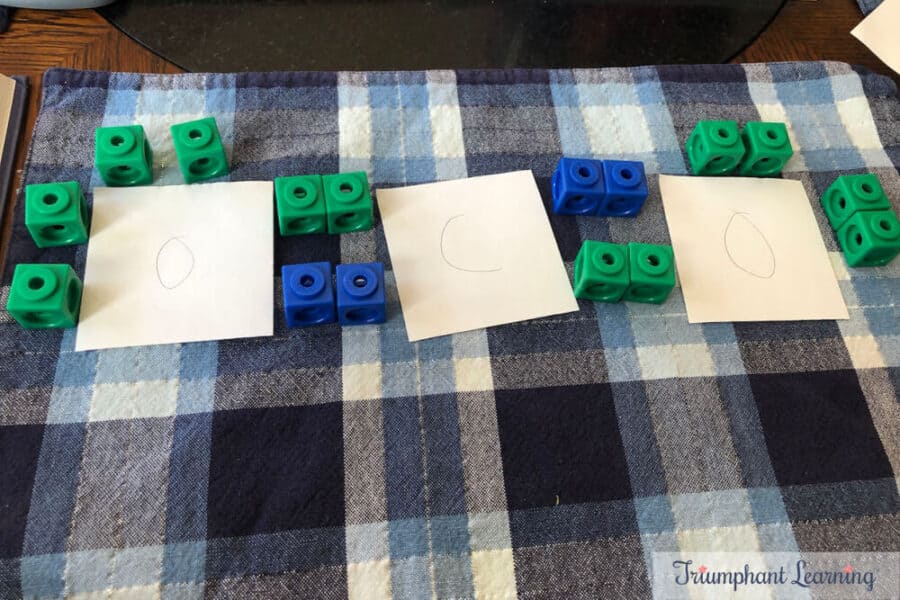
Learning Style Specific Strategies For Auditory Learners
- Read books out loud to child or provide audio books.
- Read out loud or move lips while reading silently.
- Ask for oral narrations.
- Ask your child to repeat back directions or important concepts.
- Have discussions.
- Reduce extra noise.
- Use rhymes and mnemonic devices to help memorize.
- Record items to memorize and listen while completing chores.
- Study by asking and answering questions out loud.
- Study by teaching someone else or pretending to teach stuffed animals or an imaginary classroom.
- Study by recording questions and answers and listening to the recording.
- Practice spelling by spelling the word out loud.
- Talk through tasks to complete. Say the list of tasks.
- Wear noise-cancelling headphones when studying.
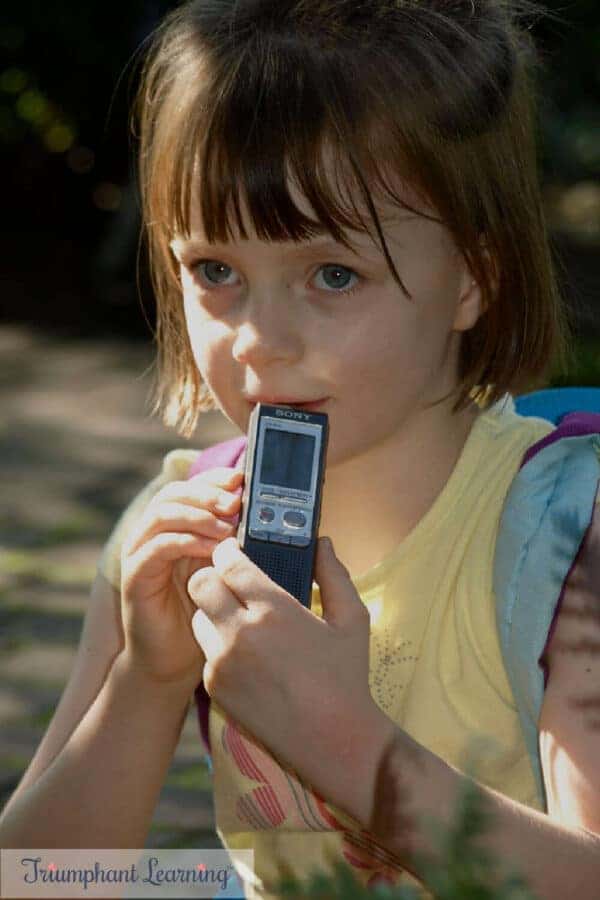
Learning Style Specific Strategies For Kinesthetic Learners
- Provide quiet activities for hands.
- Provide exercise ball or stability disc to sit on.
- Utilize a standing desk or work at a tall counter.
- Provide raw materials to recreate what he learned.
- Incorporate role play.
- Go on field trips and conduct experiments.
- Provide a place to learn and study where he can move and not be distracted by other movements.
- Study while walking around the room.
- Practice spelling by writing the word. Incorporate different tactile sensations including writing the word in the air.
- Write on a white board, chalkboard, or driveway with sidewalk chalk to use gross motor skills and engage more of the body.
- Demonstrate with artifacts and items that can be touched.
- Use flash cards. Flip through and place in “know” and “don’t know” piles.
- Take frequent breaks when studying.
- Write tasks to complete on index cards that can be moved.
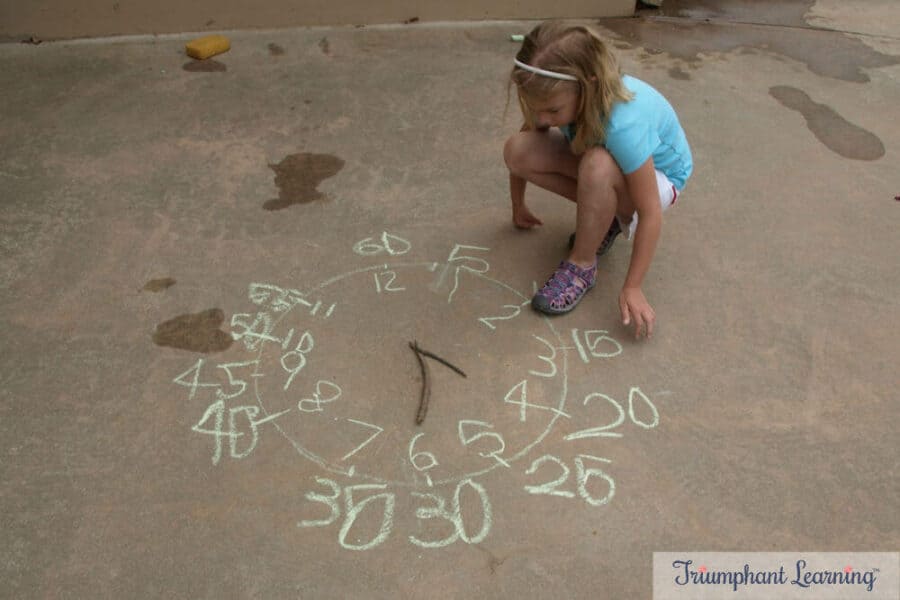
Some information adapted from Lincoln Land Community College Teaching Resource PDF.
Are you ready to create a thriving homeschool environment? Learn more about The Homeschool Roadmap.

